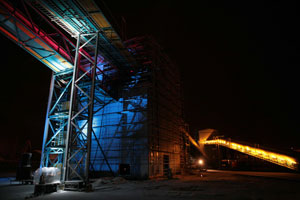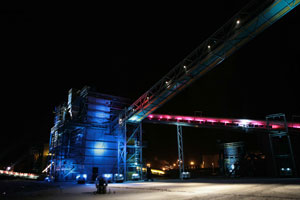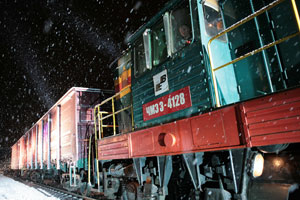Latvia, Port, Press-release, Transport
International Internet Magazine. Baltic States news & analytics
Sunday, 07.12.2025, 17:42
JSC Baltic Coal Terminal is launched at Ventspils Port
 Print version
Print version |
|---|
BALTIC COAL TERMINAL is a unique terminal that has sealed warehouses to rule out environmental pollution. The new terminal has a capacity that allows its clients to export up to 6 million tons of coal a year.
The construction of the JSC BALTIC COAL TERMINAL, which cost more than EUR 75 million altogether, is one of the largest investment projects to be implemented at the territory of the Freeport of Ventspils.
Such large-scale investments in the specialized coal terminal were made because it is the first closed-end coal terminal to be built in the Baltic region, at the Port of Ventspils, that will use the most up-to-date coal handling technologies. The latest technical solutions were employed in construction of the terminal.
 |
|---|
The JSC BALTIC COAL TERMINAL belongs to the well-known Latvian stevedoring company JSC Ventspils Tirdzniecības Osta and the LLC Indteс Baltic Coal, which represents foreign cargo owners in Latvia.
The project is financed by a bank syndicate that includes DnB NORD Banka, the Latvian branch of Nordea Bank Finland, and UniCredit Bank. The technological equipment for the terminal was provided by the German company FAM Мagdeburger Förderanlagen und Baumaschinen GMBH, the world leader in manufacturing the given equipment.
The terminal was designed by the Latvian company Ierosme, and the construction of the terminal was carried out by the joint-stock company Ventspils Tirdzniecības Osta-G. The architect offices Veralux Ehitus and the construction company Latvijas Tilti prepared the designs for, and built a new pier with two quays for coal handling. The most modern technologies and equipment were used in the designing and building the waterside facility.
The construction of the BALTIC COAL TERMINAL is a breakthrough to new standards of speed and quality in coal export and processing technology, whilst at the same time the terminal meets the strictest environmental requirements.
“It is the first time that we take part in such a large-scale project in the Baltic region and the European Union as a whole. That is why, from the very start, we put a special emphasis on the environmental requirements for the new facility – we believed that no money must be saved on this part of the project. One-third of the money that we invested into the construction and equipment of the terminal went to ensuring the ecological safety of the terminal. Now we can say with pride that all the technological processes at BALTIC COAL TERMINAL, from freight receipt to storage and dispatch, are in full compliance with all the European Union requirements. In my opinion, investing money in creating a company within the EU territory has been very valuable experience,” said BC the JSC BALTIC COAL TERMINAL Board Chairman Alexander Starikov.
“The new closed-end coal terminal has no analogs in the Baltic countries, neither in terms of the investment amount nor the technological solutions for coal handling. We used the most up-to-date technologies, many of which will be put to use for the first time in the Baltic region,” said the JSC BALTIC COAL TERMINAL Board Vice Chairman Valery Pashuta.
Technical characteristics of the terminal after the completion of the first phase of construction
 |
|---|
The railroad infrastructure of the terminal, 7.5 kilometers in length altogether, makes it possible for the terminal to accommodate up to six trains with 56 carriages each, or more than 300 railroad carriages overall, at any one time.
The coal unloading complex consists of two independent automated unloading lines, including a rotary car dumper that can unload up to 24 cars per hour, and positioners that can supply up to 30 loaded cars at one time, as well as an aspiration system, a dust suppression system and two facilities for warming up the cars in winter.
The complex for crushing and purification of coal from ferromagnetic particles consists of metal separators and two crushing units with the capacity of 1800 tons per hour each.
A covered warehouse of 24,000 square meters in area, where up to 210,000 tons of coal may be placed, offers separate storage of large coal shipments for up to three clients at one time.
A system of covered conveyor galleries, over 2.5 kilometers in length altogether, and pouring stations equipped with aspiration units and a system of automated coal sampling.
A private pier 350 meters long, with one quay on each side where capesizes with DWT of up to 120,000 tons, up to 270 meters long and with the draft of up to 15.0 meters can be loaded. The pier crane can load up to 3000 tons of cargo per hour.
The total area of the terminal is more than 20 hectares, the terminal has quality infrastructure and a safety system that meets the ISPS code.








 «The Baltic Course» Is Sold and Stays in Business!
«The Baltic Course» Is Sold and Stays in Business!

